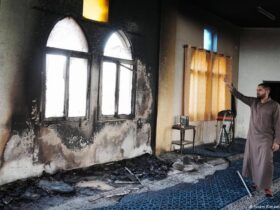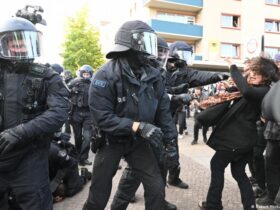More than three decades after the siege of Sarajevo, Italian prosecutors have launched an investigation into one of the darkest and least known aspects of the Bosnian war that ran from 1992 to 1995.
The investigation focuses on so-called “hobby snipers” or “sniper tourists”. These were foreigners who allegedly paid them to shoot at civilians in the city of Sarajevo, in what was called the “Sarajevo Safari”. At that time, Bosnia and Herzegovina’s capital, Bosnia and Herzegovina, was captured by Bosnian Serb forces.
The investigation was launched when Italian journalist Ezio Gavazeni and two lawyers handed a 17-page file on the events to the Milan Attorney General’s office. Gavazeni first became interested in the topic after reading about it, about 30 years ago. Speaking to Western Balkans cable news channel N1, Gvazeni explained that Slovenian director Miran Zupanic’s 2022 documentary, “Sarajevo Safari,” has rekindled his interest and fueled his recent investigation.
shooter unknown
So far, Italian prosecutors have not named any names – but they may do so soon. Gvazeni says he was in contact with individuals, including a member of the Bosnian secret service, who talked about Italian “sniper tourists” who came to the mountains around Sarajevo to shoot civilians.
Milan’s public prosecutor has apparently handed the investigation over to the anti-terrorism unit of the Italian police Special Operations Group, or ROS. Italy is the first country to launch such an investigation.
In the film “Sarajevo Safari” Bosnian military intelligence officer Edin Subasic talks about how foreigners paid to shoot civilians from the mountains surrounding the city. He describes the interrogation of a Serbian captured in 1993, who confirmed that the “snipers were tourists”.
During a night drive through Serb-controlled territory, the Serbian, who was 20 at the time and who had volunteered to fight, said he saw five foreigners in the same bus who were treated better and who were much better equipped. Three were Italians, the Serb said, including a man from Milan. The other two did not say where they were from.
Subacic claims that these travelers were not paid to fight; They paid civilians to shoot at the site in what Subacic describes as a “human safari”.
On Bosnian public television, FTV, Subasic said he had more information about the Italians involved.
Subacic suggested, “The names of some of the perpetrators were found and further investigation may shed light on how travel, payment and the return of participants were arranged.”
FTV also reported on a “special price list” that varied depending on whether the foreign shooters’ targets were men, women, pregnant women or children.
Snipers killed up to 350
Residents of Zaragoza called them “weekend Chetniks”, referring to Serbians who came to take up positions around their besieged city on weekends. “Chetnik” was an attractive description for Serbian ultranationalists.
Dzimil Hodzic was just 10 years old when his brother Emel, then 16, was killed in 1993 by a “snapper”, a Bosnian word derived from the English word sniper. Today Hodzik leads a photo project called “Sniper Alley”, in which he collects photographs from world-renowned war photographers present there and uses them to document life under siege.
“We know of mercenaries and volunteers from Russia and Greece, as well as Serbian immigrants,” Hodzic told DW. “German photojournalist Peter Kullmann has talked about meeting Serbs who came from Germany for just two days – so they claim – to defend their country. They arrived on Friday after work and returned late on Sunday, so they could get back to work on Monday.”
No one knows whether these individuals were paid to do so or whether they were paid to be there. But, Hodzic says, he “left a bloody trail on the streets of Sarajevo.” More than 11,000 people were killed during the siege of the city, including approximately 1,061 children. The Bosnian War took more than 100,000 lives overall.
Mirsad Tokaca, director of the Research and Documentation Center in Zaragoza, told DW that an analysis of casualty data shows that snipers were responsible for the deaths of 300 to 350 people in Zaragoza.
“Almost all the victims were civilians,” he said.
Although there is no accurate data on the number of snipers who came from abroad to fight, the involvement of foreign mercenaries in Bosnian Serb forces is well documented, Tokača explains. “Our database lists about 300 people from Greece, Russia, Ukraine and other countries who fought in the Serbian army,” he says.
Should the existence of “sniper tourists” be verified, the Italian investigation could lead to the first trial of European citizens involved in war crimes outside formal military organizations – even if with the knowledge of Bosnian Serb forces.
This story was translated from German.






Leave a Reply